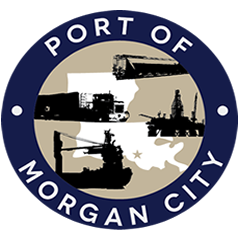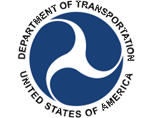April 24, 2009
Experts in the fields of transportation, economic development and coastal restoration were among those to address the 26th annual Ports Association of Louisiana conference at the Holiday Inn of Morgan City. The three-day 26th annual conference ended this morning with a board meeting. “Atchafalaya Gateway: Leading to the Gulf and Beyond,” was the theme of the event. Helping welcome the visitors to the area were Morgan City Mayor Tim Matte, Berwick Mayor Louis Ratcliff, St. Mary Parish President Paul Naquin, Morgan City Harbor and Terminal District President Raymond “Mac” Wade and state Reps. Joe Harrison, R-Labadieville, and Simone Champagne, D-Jeanerette. Louisiana Secretary of Transportation and Development Dr. William Ankner, state Economic Development Secretary Stephen Moret and Department of Natural Resources Deputy Secretary Lori LeBlanc offered optimistic predictions about the future of the state in their respective fields. The crystal ball was not nearly as clear for Jennifer Marusak of Moving Louisiana Forward, a transportation watchdog group, and R. King Milling, who heads the America’s Wetlands campaign. Offering their insights to conference attendees about ongoing coastal and border protection efforts were Garrett Graves and Mitch Merriam.
Graves is director of the Louisiana Coastal Protection and Restoration Authority. Merriam is the U.S. Customs & Border Pro La. port officials wind down Morgan City convention tection Office of Field Operations director at the Port of New Orleans. The seven speakers were part of a day-long program that also featured a keynote address by Brig. Gen. Michael Walsh of the U.S. Army Corps of Engineers. Garrett Graves Graves offered an overview of the Mississippi River and its tributaries, outlining the historic importance of the waterway to the nation. He said the Lower Mississippi River Delta, which includes the Atchafalaya Basin, has been “much of the continent’s foundation for human life.” Graves said Thomas Jefferson noted in the early 1800s that nearly half of the country’s products passed through New Orleans. That ultimately led to the $15 million Louisiana Purchase that doubled the size of the nation. At the time the proposal faced domestic opposition from a constitutional standpoint.
Although Jefferson felt that the U.S. Constitution did not contain any provisions for acquiring territory, he decided to purchase Louisiana because he felt uneasy about France and Spain having the power to block American trade access via New Orleans. “It apparently became the basis for Louisiana politics since the government had neither the money nor authority to do it,” Graves joked. He said the state has become the nation’s largest hub of maritime activity with five of the top 15 tonnage ports in the U.S. One of every seven jobs in Louisiana are “waterway dependent,” he said, pointing out that the state is involved in $2.2 trillion in offshore exploration, production, pipeline and cargo activities. Half of the entire nation’s domestic oil and gas is produced in the Gulf of Mexico, supplying around 30 percent of the nation’s energy needs. The state also is ranked second behind Texas in the number of oil and gas refineries, and has more than 9,000 miles of pipelines. In addition, Louisiana is the top producer of seafood products in the Lower 48, trailing only Alaska in that category. Louisiana ranks tops in the nation in the production of oysters, blue crabs and crawfish, Graves added. And since Louisiana has direct access to 31 states because of the maritime industry, “That gives us a definite advantage and offers an incredible opportunity for a win-win situation for industry.” He said the state’s greatest challenge is with coastal land loss, which amounted to 2,300 square miles in the past century with 200 square miles lost after the 2005 passage of Hurricanes Katrina and Rita. Levees construction has changed its course and prevented the accumulation of sediment in many coastal areas. The Atchafalaya River, however, is one of the few deltaic regions which is actually growing, he noted. Had the river been allowed to choose its own course, Morgan City might not exist, (and Louisiana) would be “bigger than Texas, rather than just better,” he joked.
Graves, among other speakers, agreed that dredged river material should be used to build up the state’s coastline to replace what has been lost to erosion. Lori LeBlanc As deputy secretary of the state’s Department of Natural Resources, LeBlanc said Louisiana is in a unique situation of being both an energy state as well as a “Sportsman’s Paradise.” “We’re not an either-or state,” she said. “We can have it all.” She said DNR takes “great pride in ensuring that balance is maintained.” Energy trends affecting the state’s budget over the past year include the precarious price of oil and gas, and rig counts. “What a difference a year makes,” she said, pointing out that energy prices and rig activity — coupled with a pair of hurricanes and an economic recession — have had the state on an “extreme roller-coaster ride” in recent times. “It’s not a hurricane this time, but an economic storm we will have to deal with,” she said. She noted that the price of oil has experienced dramatic spikes and declines over the past decades, going from $14 a barrel to around $147 before settling at about $47 a barrel today. Also, natural gas prices have climbed from around $2 to $12 per million British thermal units in the same period. The nation’s working rig count has fallen by nearly 50 percent from a high of more than 1,800 rigs last year to a total of 975 rigs today. This is the first time since 2003 that the nation has had less than 1,000 active rigs, she said.
The rig count decrease has not been as dramatic in Louisiana, which has shown an 11-percent decline during the past year, she said. Because the price of oil remains relatively low, LeBlanc said, “It appears the oil and gas industry is learning to do more with less.” She said the massive Haynesville Shale natural gas field in north Louisiana — the largest of its kind in the U.S. — would have a tremendous impact on the state’s energy industry, a predicted $10 billion impact on the state in the near future. That field is expected to produce around 245 trillion cubic feet of recoverable natural gas. That would dwarf the Barnett Shale field in central Texas, which currently produces 40 tcf. All 64 of the state’s parishes have had oil and/or gas produced within their boundaries at one time. Currently, 54 parishes are producing. Louisiana leads the nation in the percentage of crude oil (86 percent) and natural gas (81 percent) produced on the Gulf of Mexico’s Outer Continental Shelf. LeBlanc also said there is a lot of renewed interest in ultradeepwater exploration in recent years. Oil and gas severance tax collections have doubled in the past five years and quadrupled during the past 10 years, producing a “tremendous impact on the state’s budget,” she added.
Haynesville Shale has contributed greatly to those numbers, with $92 million of the $93 million in natural gas collections coming from that one project. LeBlanc said the state remains dependent on oil and gas but not as dependent as it once was, because a smaller percentage of the state’s budget is comprised of energy revenues than in past years. Stephen Moret Louisiana Economic Development Department’s secretary said he remains “bullish” about the state’s long- and short-term economic recovery potential. Moret pointed out that there are more jobs now than when the recession began in 2007. Currently, the state’s unemployment rate stands at around 5.5 percent, compared to the nation at 8.5 percent. The state’s main focus has been jobs retention, he said, adding that there are at least 44 “significant business development projects” in the works. The department’s efforts have resulted in retaining 11,000 jobs, 20,000 new jobs, around $3 billion in capital investment projects and between $30 billion and $40 billion annually in new tax revenues. Last year was the best year on record for the state’s involvement with the entertainment industry, Moret said. Louisiana now ranks third in revenues generated from film production, trailing only California and New York in that department. The state’s “bedrock industries” of oil and gas exploration and agriculture are being complemented by attraction of other industries as well, he said. Among the companies choosing to relocate their headquarters to Louisiana from other states in recent years are the Albemarle Corp. and Horizon Entertainment. Also, the Shaw Group has chosen to remain here and CenturyTel’s recent merger has created the state’s third Fortune 500 company.
Expansion of the digital media industry into the state, along with new cotton mills and chicken processing facilities in the northern parishes are further signs that the economy is successfully diversifying. In addition, Edison Schouest has created 1,000 more jobs and the Shaw Group is embarking on a manufacturing facility in the Lake Charles area that will create another 1,400 high-paying jobs, Moret said. Despite the failure of banks around the nation, Moret said the state’s banks remain as strong today as they were prior to Hurricanes Katrina and Rita. Louisiana has also fared well in most of the national business rankings in recent years, he said. The state only declined in one ranking but climbed in 10 others, he pointed out. And there have been no significant price declines in the housing market compared to many other parts of the country, he added. In terms of population, Moret noted that 2008 was the second consecutive year of positive growth for the state after several years of decline. Also, Louisiana State University entered the top tier of research institutions around the country for the first time ever, he said. “We’re not where we want to be yet, but we are definitely headed in the right direction,” Moret said. The Department of Economic Development’s budget will be 60-percent down from a year ago, “But it will not slow down our efforts,” he said, explaining that the department’s most vital programs will be maintained while the next tier of programs will either be sharply reduced or eliminated. One program that will remain intact is Fast Start, a business-training program modeled after a very successful QuickStart campaign in rural Georgia. Moret pledged that Fast Start would be in the top 10 of its kind in the nation within the next year, in the top three within three years and will be the top program in the U.S. within four years. Dr. William Ankner The Transportation and Development Secretary said the Highway Department “remains in better shape than our colleagues around the U.S. who have experienced huge cutbacks in both funding and employees.” Ankner admitted that much infrastructure work is needed on the state’s road and ports, but said he felt that Louisiana’s transportation system as a whole is better than it has been.” Deterioration of the state’s highway system is still occurring, he noted, but the curve hasn’t been as steep as it was in the past.”
With about $500 million in the budget, the department will be able to address nine significant projects in the coming year totaling about $138 million, with the remainder used for road and bridge maintenance. He said DOTD likely will lose money this year and next, with reimbursements due to the General Fund and to the Port Priority Program. Debate over how to spend any reserve funds will begin when the Legislature convenes Monday. The state’s share of federal economic stimulus funding of between $700 million and $800 million could be spent on a wide variety of transportation projects, including port improvements, Ankner said. Legislation had dedicated funds to port and railroad rehabilitation, but that bill ultimately was tabled. A renewed push to use a substantial amount of economic stimulus funds has since been undertaken, Ankner said. Gov. Bobby Jindal took much flak for failing to embrace all the stimulus funding being offered to the state, he said. Ankner said he advised the governor not to accept the transportation funding because the amount would have been locked into the state’s maintenance projects list as of Oct. 1, 2008. That list was still a work in progress at the time, however, so accepting the stimulus money would have required another $79 million to $85 million from the state’s General Fund. Delaying acceptance of the stimulus funds until an agreement could be reached to lock in the maintenance work as of Feb. 17, 2009, will keep the state from using General Fund money. He said he is now encouraging the governor to accept approximately $300 million in stimulus funds for transportation projects. Ankner said the state is aggressively pursuing intermodal projects involving highway, rail, air and water access in an effort to keep pace with other southern states. He urged the port to “work through the DOTD to make requests to your Congressional
(Click here for more photos)
PAL Speakers Bullish on Louisiana
- Details















